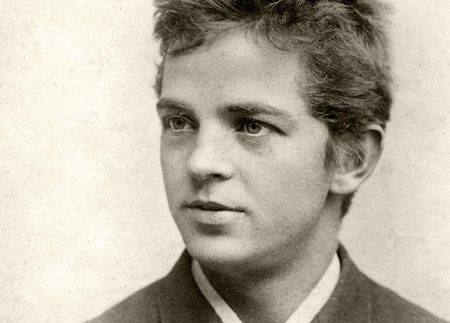
What does the name Denmark conjure up for you? Perhaps you think of the famous statue of The Little Mermaid, which has been a tourist attraction since 1913. Or perhaps you think of the slightly odd-looking Hans Christian Anderson, famous for his fairy stories. Incidentally, a ballet setting of his story The Little Mermaid was the inspiration for the statue. Or perhaps the name Denmark brings more mundane things to mind like Lego toys, Danish Blue or Lurpak butter. And talking of Lurpak butter, if you’ve examined the packing closely you may have been puzzled by those things that look like a pair of garden hoses.
They are in fact, musical instruments known as lurs, hence the brand name. The lur is an ancient instrument once common in Scandinavia. It was a kind of bronze trumpet up to eight feet in length and bent into an S-shape, presumably to make it less unwieldy. Lurs had no fingering holes or valves, so players would adjust their lips to produce different notes in the same way as a modern bugle. The lur was evidently used as an instrument of war to marshal troops and a similar instrument was used during the Middle Ages for calling cattle and signaling.
Ask musicians what springs to mind at the mention of Denmark but it probably won’t be a lur. More likely, they’ll come up with the name of Carl Neilson, generally regarded as the country’s greatest composer.
At this point, it would have most satisfying to introduce Carl Nielsen’s Concerto for Lur and Orchestra but unfortunately he didn’t write one. Born on the Danish island of Funen on 9th June 1865, he showed exceptional musical promise at an early age. From 1884 Nielsen studied at the Royal Academy in Copenhagen and five years later he was accomplished enough to become a violinist in the Royal Danish Orchestra, a position he held for sixteen years before eventually becoming an occasional conductor of the orchestra. He’s probably best known for his six symphonies but he never became recognised as a major composer during in his lifetime.
“I had the idea for The Four Temperaments many years ago at a country pub in Zealand,” wrote Nielsen. “On the wall of the room where I was drinking a glass of beer with my wife and some friends, hung a comical coloured picture, divided into four sections in which The Four Temperaments were represented.”
These you may recall, reflected the ancient Greek medical belief that there are four fundamental personality types, sanguine (enthusiastic and social), choleric (short-tempered and irritable), melancholic (analytical and quiet), and phlegmatic (relaxed and peaceful). Nielsen began work on the symphony in 1901 and it was first performed a year later with the composer conducting.
The first movement (Choleric) bursts with energy, while the second movement (Phlegmatic) describes a young man whose “real inclination was to lie where the birds sing, where the fish glide noiselessly through the water, where the sun warms and the wind strokes mildly round one’s curls.” In the third movement, (Melancholic) there’s some splendid brass writing and in the finale (Sanguine) the composer describes someone “who storms thoughtlessly forward in the belief that the whole world belongs to him”.
Like Nielsen, Dahl was also born on 9th June. This concerto dates from 1949 and is one of his most frequently performed works. Writer Steve Swartz described Dahl’s music as “a cross between Stravinsky and Hindemith” and this is probably a fair assessment. It’s an approachable and enjoyable work in just two movements, an improvisational first movement and a slow meditative second movement.
You’d guess from his name that Dahl was also Scandinavian, and he certainly would like you to have thought so. He was born in Hamburg to a German father and a Swedish mother and given the name Walter Ingolf Marcus. When he was twenty-seven he moved to the United States and changed his name to Ingolf Dahl, borrowing his mother’s maiden name. After settling in Los Angeles he became friendly with a galaxy of famous names including Milhaud, Schoenberg and Stravinsky. He had a colourful musical career and worked with Gracie Fields, wrote arrangements for Tommy Dorsey and was a musical arranger for the comedian Victor Borge.
Dahl also worked in soundtrack orchestras for many Hollywood film companies and for a time, he was even involved in the television show The Twilight Zone. Throughout his life, he was secretive about his German background and claimed that he was Swedish. Which of course, he wasn’t.
 |
 |
 |





